What Is Input Lag? How to Minimize It for Better Performance
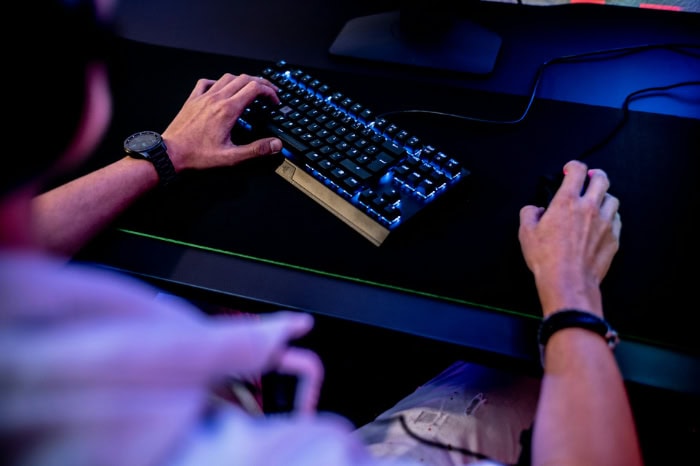
Input lag can be a silent disruptor in the world of gaming and interactive applications. It’s the gap between pressing a button and seeing the result on your screen, and while it might seem like a minor hiccup, it can deeply affect the fluidity of user experience.
Whether you're playing a high-speed game or navigating through creative software, a delay of even a few milliseconds can make systems feel sluggish, impacting performance.
For gamers, input lag can be the difference between landing a perfect shot or missing entirely, while in professional environments, it can slow productivity.
Understanding Input Lag
Input lag refers to the delay between a user’s action—such as pressing a key, moving a mouse, or tapping a touchscreen—and the resulting visual feedback on the display. It’s important to distinguish input lag from related terms like response time and network latency.
Response time typically refers to how quickly a pixel on a monitor can change from one color to another, while network latency is the delay caused by data traveling across a network, such as between a game server and a player’s device.
Input lag, on the other hand, focuses more on the delay between user input and the system’s visual reaction to that input.
For instance, in a video game, input lag occurs between the moment you press a button to shoot and the moment the action is rendered on the screen. This delay can be caused by a variety of factors, ranging from the hardware used to render the output, to the settings applied in the game or software.
The lower the input lag, the more immediate and responsive the experience feels, which is critical for fast-paced activities like gaming or video editing.
How Input Lag Works
To better grasp input lag, it helps to break down the process from the moment a user initiates an action to when the result appears on the screen. The following steps outline the basic sequence:
- User Input: The process starts with the user pressing a button, moving a joystick, or clicking a mouse. This input is sent to the system via a peripheral device (keyboard, mouse, controller, etc.).
- Processing by the System: Once the input is received, the computer or gaming console processes the command. The CPU, GPU, and other hardware components interpret the instruction and prepare the necessary output. During this phase, the system may also need to perform additional tasks, such as calculating physics in a game or rendering complex graphics.
- Rendering the Output: After processing, the system sends the visual output to the display device (monitor, TV, etc.). The display must then render the action on the screen, converting the processed data into visible pixels.
- Display Response: Finally, the screen shows the result of the action, completing the loop between the user’s input and the visual feedback.
Throughout this process, delays can accumulate at different stages, contributing to the total input lag. For example, the system may take time to process the input due to heavy computational loads, or the display may have a slower response time, delaying the rendering of the output.
Each of these stages adds milliseconds of delay, which can be perceptible to users in certain scenarios.
Types of Latency
Input lag is just one form of latency that affects digital systems, and it’s helpful to understand how it fits into the broader category. Various types of latency can contribute to the overall delay in a system, including:
- Display Lag: This refers to the delay caused by the display device (like a monitor or TV) as it processes and renders the image on screen. Different display technologies, such as LCD, OLED, or CRT, have varying levels of display lag. Factors like refresh rate, response time, and post-processing features (e.g., motion smoothing) can also influence display lag.
- Network Latency: This type of latency occurs when data is transmitted over a network, such as in online games or cloud-based applications. Network latency is often measured in terms of ping, which represents the round-trip time it takes for data to travel from the user’s device to a server and back. High network latency can contribute to input lag by delaying the feedback users receive from online servers.
- Processing Delays: These occur within the system’s hardware, such as the CPU and GPU, as they process user inputs and prepare the necessary output. Processing delays can happen due to high workloads, inefficient software optimization, or the limited performance capabilities of the hardware being used.
Each of these forms of latency can contribute to the overall experience of input lag. For example, even if a display has a low response time, high network latency or processing delays may still result in noticeable input lag.
Causes of Input Lag
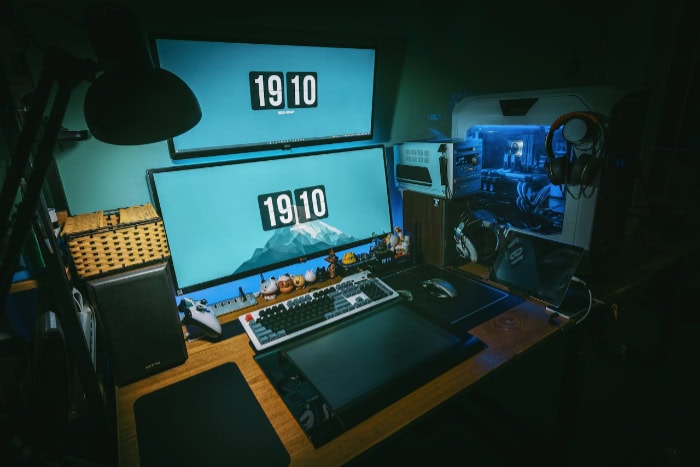
Several factors contribute to input lag, ranging from the hardware used to the settings configured both in software and on the display. Each of these elements plays a role in how quickly an input action is processed and reflected on the screen.
Hardware Factors
The hardware involved in processing and displaying input signals is one of the biggest contributors to input lag. Different components within a system play specific roles in how input is handled, and each can introduce delays.
Monitors
The type of display being used has a significant impact on input lag. Modern monitors and TVs vary in how quickly they can process and display information.
For instance, high-refresh-rate monitors (e.g., 120Hz or 240Hz) tend to reduce input lag compared to standard 60Hz displays because they refresh the image more frequently.
Additionally, the display’s processing capabilities—particularly when handling higher resolutions like 4K—can add extra milliseconds of delay.
GPUs (Graphics Processing Units)
The GPU is responsible for rendering graphics and sending them to the display. A powerful GPU can process and output frames more quickly, reducing the overall input lag.
When a GPU struggles to keep up with the demands of a game or application (e.g., due to high-resolution textures or complex effects), it can introduce delays, as the system struggles to process the input and render the output efficiently.
Peripherals
The input devices themselves—such as keyboards, mice, and game controllers—also contribute to input lag. Wireless peripherals, for example, often introduce more latency than their wired counterparts due to the time it takes for the signal to travel wirelessly and be interpreted by the system.
High-performance gaming mice and keyboards are designed to minimize this kind of delay, offering faster polling rates and lower latency.
System Performance
The overall performance of the system, including the CPU and memory, can also affect input lag. A system that is overburdened with background processes or running on older hardware may introduce delays as it struggles to keep up with the demands placed on it by modern applications or games.
Display Settings and Technology
The settings and features of your display can either help reduce or increase input lag. Some settings prioritize image quality over speed, which may lead to noticeable delays in user input.
Refresh Rate
The refresh rate of a monitor, measured in Hertz (Hz), dictates how many times per second the display updates the image. A higher refresh rate, such as 144Hz or 240Hz, allows more frequent updates, reducing the delay between what the system outputs and what appears on the screen.
Lower refresh rates, like the standard 60Hz, introduce more noticeable input lag, especially in fast-paced gaming scenarios where reaction time is critical.
Response Time
A monitor’s response time refers to how quickly individual pixels can change from one color to another. This is a separate concept from input lag, but the two are related.
Monitors with slower response times (e.g., 5ms or higher) can introduce motion blur or ghosting, which can make input lag feel more pronounced. Lower response times (e.g., 1ms or less) help ensure that the screen keeps up with rapid movements, making the user experience feel smoother and more responsive.
Motion Smoothing and Post-Processing
Many modern displays come equipped with features like motion smoothing, which is designed to make lower frame rate content appear smoother. However, this feature often introduces significant input lag because the display has to process multiple frames to calculate the motion interpolation.
Similarly, other post-processing effects, such as upscaling or color enhancements, can add extra time between when the signal is received and when it is displayed. Disabling these features can be an effective way to reduce input lag.
Upscaling
When content is displayed at a resolution lower than the native resolution of the monitor (e.g., displaying 1080p content on a 4K display), the system or the display itself may need to upscale the image to fill the screen. This upscaling process can add additional processing time, increasing input lag.
For users looking to prioritize responsiveness, running content at the native resolution of the display can help minimize this delay.
Software Configurations
Software settings, both within individual applications and the operating system, can also play a role in input lag. By adjusting these settings, users can often make noticeable improvements to responsiveness.
V-Sync (Vertical Synchronization)
V-Sync is a feature that synchronizes the frame rate of a game with the refresh rate of the monitor to prevent screen tearing (a visual artifact where parts of two different frames are displayed at once). However, V-Sync can introduce input lag because it forces the system to wait for the display to be ready before rendering a new frame.
This delay can be especially noticeable in fast-paced games where quick inputs are crucial. Disabling V-Sync can reduce input lag, although at the cost of potentially reintroducing screen tearing.
Frame Rates
Games and applications that run at higher frame rates (measured in frames per second, or FPS) tend to have lower input lag because the system is rendering frames more frequently. However, if the GPU struggles to maintain a consistent frame rate, it can lead to stuttering or frame drops, which can worsen input lag.
Optimizing frame rates by adjusting in-game settings (e.g., lowering graphical details) can help maintain smoother performance and reduce delays.
Game Engines
Different game engines process inputs and render outputs in different ways, meaning that the same hardware can produce different levels of input lag depending on the software being used. Some engines are optimized to reduce lag, while others may not be as efficient.
Users may not have direct control over this factor, but it’s worth noting that some games inherently have more lag than others due to the way they are programmed.
Operating System Settings
Input lag can also be affected by the operating system’s handling of input devices and display output. For instance, some systems allow users to adjust the polling rate of their mouse or change settings related to how the system prioritizes tasks.
Additionally, outdated drivers for GPUs or input devices can introduce unnecessary delays. Keeping drivers updated and ensuring that the system is not overloaded with background tasks can help improve input responsiveness.
Effects of Input Lag on User Experience
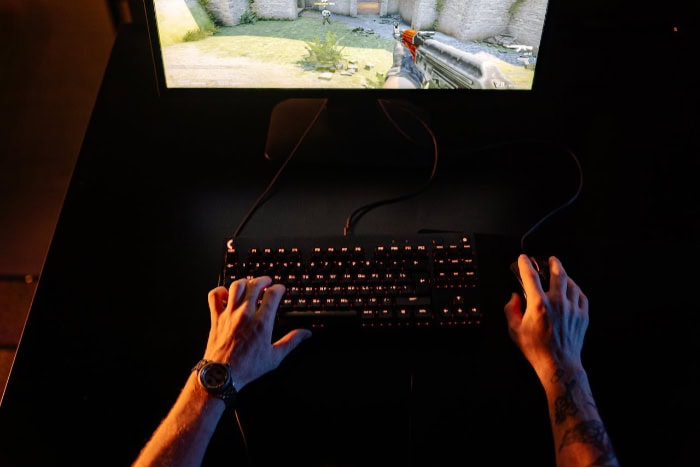
Input lag can have a significant impact on how users interact with digital systems, from gaming to professional applications. Even slight delays between input and response can disrupt the flow of activities, making systems feel less responsive and, in some cases, affecting overall performance.
Gaming Performance
In competitive gaming, input lag can be a critical factor in determining success or failure. Games that require fast reflexes, such as first-person shooters, fighting games, or racing titles, demand near-instantaneous responses from the player.
Even a few milliseconds of delay can make the difference between landing a critical hit or missing an important shot.
When input lag is too high, players may experience a disconnect between their actions and what happens on screen. For example, pressing a button to fire a weapon may feel delayed, causing the player to react slower than intended.
This is especially problematic in online multiplayer games where split-second decisions often determine the outcome of matches. In these environments, a low-lag setup is essential for maintaining accuracy and keeping up with opponents who may have faster, more responsive systems.
Beyond reaction times, input lag also affects precision. In games that require fine motor control, such as aiming with a mouse or controller, input lag can cause overshooting or undershooting targets.
This lack of precision can frustrate players and lead to a less enjoyable gaming experience. To remain competitive, many gamers invest in high-performance monitors, low-latency peripherals, and other hardware that minimizes input lag.
General Usability
While gaming is one of the most obvious areas where input lag has an impact, it also affects a wide range of non-gaming applications. In general computing tasks, such as web browsing or document editing, input lag can make a system feel sluggish and unresponsive.
For example, typing on a keyboard with noticeable input lag can create a disconnect between the user’s thoughts and what appears on the screen. The delay may not be as disruptive as in gaming, but it can still slow down productivity and lead to frustration.
In professional environments, where precision and timing are critical, input lag can have more serious consequences. For example, in video editing, any delay in scrubbing through footage or making precise cuts can disrupt the workflow.
In virtual production environments, where real-time rendering and interaction are essential, input lag can make it difficult to synchronize actions with on-screen movements, leading to errors in timing or coordination.
Similarly, in fields like graphic design or music production, input lag can interfere with the creative process. Artists using stylus pens or MIDI controllers rely on real-time feedback to ensure their actions are accurately represented on screen.
When there’s a delay between input and output, it becomes harder to achieve the desired level of precision, potentially slowing down or derailing the entire project.
Perceived Responsiveness
Even small amounts of input lag can affect how users perceive the responsiveness of a system. For most users, perceived responsiveness is about how quickly the system reacts to their actions.
If there’s a delay, even if it’s imperceptible in terms of raw numbers, the system may feel sluggish, causing frustration or discomfort.
In everyday interactions, such as moving a cursor or scrolling through a webpage, users expect a near-instant response. When the delay becomes noticeable, the experience can feel less smooth and natural.
This perceived lack of responsiveness can be especially jarring when switching between devices with different levels of input lag.
For example, using a high-performance gaming setup and then switching to a regular office computer with higher input lag can make the latter feel slow, even if it performs adequately in other respects.
In some cases, users may not consciously notice the input lag but may still feel that the system is “off” or unresponsive. This can lead to dissatisfaction and reduce the overall enjoyment or effectiveness of the system, especially for tasks that require a high level of interaction, such as digital drawing or touchscreen navigation.
How to Measure Input Lag
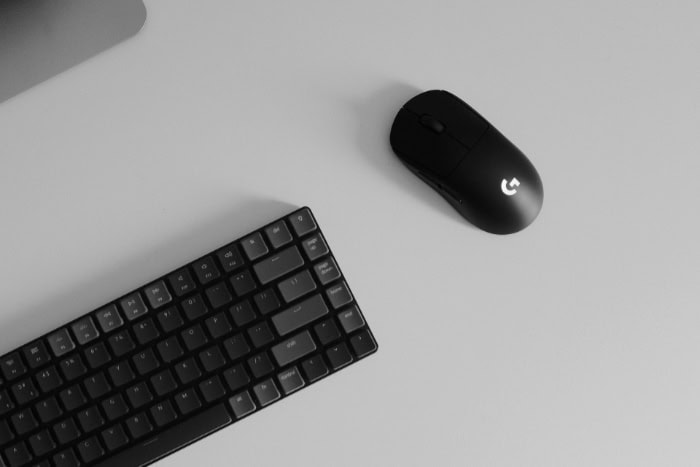
Measuring input lag can be a complex process because it involves capturing the time difference between when an action is initiated and when the response becomes visible. Fortunately, there are several methods available to measure input lag, ranging from manual techniques to software tools.
Manual Measurement Techniques
Manual measurement of input lag typically involves using external tools to capture the delay between input and response. One of the most common approaches is using a high-speed camera to record the screen while a specific input is made, such as pressing a button or clicking a mouse.
A high-speed camera—capable of recording at thousands of frames per second—can capture the exact moment the input occurs and the precise moment the action is reflected on the display. By reviewing the footage frame by frame, users can count the number of frames between the input and the response.
This allows them to calculate the input lag as a function of time, typically measured in milliseconds (ms). For example, if the camera records at 1,000 frames per second and there is a delay of 5 frames between input and output, the input lag is 5 milliseconds.
Another manual method involves using specialized tools, such as input lag testers. These devices are designed to measure the delay between when a signal is sent to a display and when it's rendered on the screen.
Some input lag testers are integrated into gaming monitors or peripherals, while others are standalone devices that can be connected to any display.
These tools often measure the time delay in microseconds or milliseconds and are more straightforward than using a high-speed camera, though they may not provide as detailed measurements.
While manual techniques can be accurate, they require specific equipment and careful setup, making them less accessible for the average user. However, for enthusiasts or professionals who need precise measurements, these methods are among the most reliable options.
Manufacturer Specifications
For users who lack access to specialized tools or high-speed cameras, another way to assess input lag is by interpreting the specifications provided by manufacturers. Many monitor and peripheral manufacturers include information related to input lag or related factors, such as response time and refresh rate, in their product details.
Monitor Specifications
Monitors typically list specifications like response time (measured in milliseconds) and refresh rate (measured in Hertz). While response time refers to how quickly pixels on the screen can change, it can still influence the overall input lag.
A lower response time (e.g., 1ms or 2ms) generally indicates a more responsive display, though it doesn’t account for other delays in the system, like processing or display lag.
Similarly, a higher refresh rate (e.g., 120Hz or 240Hz) can reduce input lag by allowing the screen to update more frequently, though the total input lag will also depend on other factors, such as the performance of the GPU and the system’s overall processing speed.
Some manufacturers also provide specific input lag measurements in their product documentation. This is more common with gaming monitors or high-performance displays, where input lag is a critical factor.
These values are typically measured under ideal conditions using a specific set of hardware, so actual performance may vary depending on the user’s setup. Nevertheless, manufacturer-provided input lag values can give a general idea of how responsive the display will be.
Peripheral Specifications
Input devices, particularly gaming mice and keyboards, also list specifications that can influence input lag. For instance, mice often specify their polling rate, which refers to how frequently the mouse sends data to the computer (measured in Hertz).
A higher polling rate (e.g., 1,000Hz) means the mouse communicates with the system more frequently, reducing the potential for input delay. Similarly, gaming keyboards may advertise low-latency key switches designed to minimize the delay between pressing a key and registering the input on the system.
While these specifications provide useful guidelines, they don’t always paint a full picture of input lag, as they don’t account for how the system’s hardware and software might introduce additional delays.
Software Tools for Measurement
Several software tools can help users measure input lag in real-time environments, especially within the context of gaming or other interactive applications. These tools are often more accessible than manual methods and provide immediate feedback on system performance.
One popular tool for measuring input lag is NVIDIA's Reflex Latency Analyzer, which is integrated into certain gaming monitors and supported by NVIDIA graphics cards. Reflex measures the time it takes for an input to be processed and displayed on the screen, providing users with detailed information about their system’s latency.
Reflex can break down latency into different stages, such as peripheral latency, system latency, and display latency, allowing users to pinpoint where delays are occurring.
Another widely used tool is RivaTuner Statistics Server (RTSS), which allows users to monitor system performance in real-time, including frame rates and other factors that can influence input lag.
While RTSS doesn’t directly measure input lag, it provides valuable insights into how well a system is running and whether it’s capable of maintaining high frame rates, which can indirectly affect input lag.
When paired with a tool like MSI Afterburner, which tracks GPU performance, users can get a comprehensive view of how their system handles inputs and outputs.
For users specifically interested in measuring input lag in games, tools like LDAT (Latency Display Analysis Tool) by NVIDIA are dedicated to capturing input-to-display latency in gaming setups.
These tools are designed to measure the delay between when a button is pressed and when the corresponding action is shown on the screen, making them particularly useful for competitive gamers who need to minimize lag as much as possible.
While software tools may not be as precise as manual methods, they are a practical option for most users looking to assess their system’s responsiveness. These tools provide a more accessible way to measure input lag without needing specialized equipment or extensive technical knowledge.
Solutions to Reduce Input Lag
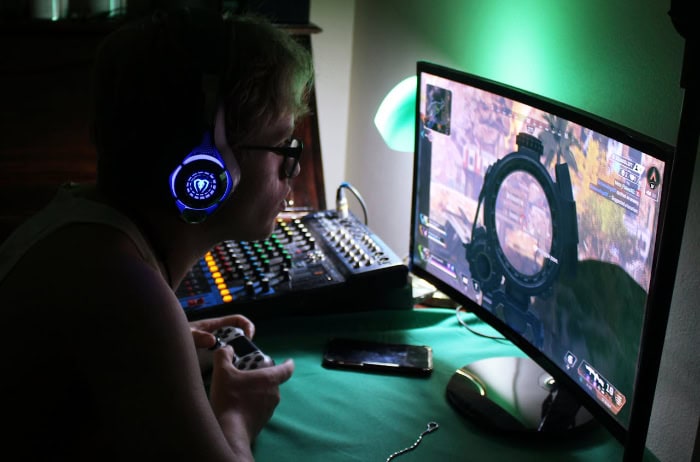
Input lag can undermine the responsiveness of a system, whether during gaming or using professional applications. Fortunately, there are several strategies to reduce this delay, ranging from upgrading hardware to optimizing software settings.
Hardware Upgrades
One of the most effective ways to reduce input lag is to upgrade the hardware responsible for processing and displaying input. Modern components are designed to handle more data at higher speeds, ensuring that latency is kept to a minimum.
Monitors with Higher Refresh Rates
Upgrading to a monitor with a higher refresh rate is one of the most impactful changes users can make.
A monitor with a refresh rate of 120Hz, 144Hz, or even 240Hz refreshes the screen more frequently than a standard 60Hz display, reducing the time it takes for an input to be reflected on the screen.
This is particularly beneficial in fast-paced gaming environments, where quick reaction times are crucial. Higher refresh rates allow the display to keep up with rapid movements, making the system feel more responsive and reducing the perception of lag.
Wired Peripherals
While wireless technology has improved in recent years, wired peripherals still tend to offer lower latency than their wireless counterparts. For gamers or professionals working in latency-sensitive environments, using a wired mouse, keyboard, or controller can significantly reduce input lag.
Wired connections eliminate the slight delay caused by wireless signal transmission, ensuring that inputs are registered more quickly and consistently. High-performance gaming mice and keyboards also offer faster polling rates, further minimizing the delay between input and response.
Improving GPU Performance
The GPU plays a critical role in how quickly graphics are processed and displayed. A more powerful GPU can render frames faster, reducing the time it takes for the system to process inputs and display the output.
Upgrading to a newer or more powerful graphics card can significantly improve frame rates and overall system performance, particularly in graphically demanding games or applications.
Additionally, ensuring that the GPU is not being bottlenecked by other components, such as an outdated CPU, can further reduce input lag.
Optimizing Display Settings
In addition to hardware upgrades, adjusting display settings can also have a noticeable impact on input lag. Many modern displays come with various features that, while designed to enhance picture quality, often introduce additional processing time.
Disabling these features can lead to a more responsive experience.
Disabling V-Sync
Vertical synchronization (V-Sync) is a feature that synchronizes the frame rate of the game with the refresh rate of the monitor to prevent screen tearing. However, V-Sync can introduce significant input lag because the system waits for the display to be ready before rendering new frames.
This delay can be especially noticeable in fast-paced games where quick reactions are essential. Disabling V-Sync reduces input lag by allowing the system to process inputs and render frames as quickly as possible, though it may result in some screen tearing.
For those who want to balance the two, adaptive sync technologies like NVIDIA G-Sync or AMD FreeSync offer a compromise, reducing screen tearing while minimizing input lag.
Turning Off Motion Smoothing and Post-Processing Effects
Many modern TVs and monitors include motion smoothing or frame interpolation features designed to make lower frame rate content appear smoother. These features work by processing multiple frames to predict motion, which often results in significant input lag.
Disabling motion smoothing, along with other post-processing effects (such as noise reduction or image enhancement), can drastically reduce the time it takes for the display to show the output, leading to a more immediate response to user inputs.
Enabling Game Mode on Monitors
Many gaming monitors and TVs come with a “Game Mode” setting specifically designed to reduce input lag. When enabled, Game Mode disables or reduces various post-processing effects that can cause delays, prioritizing responsiveness over image quality.
This setting is especially useful for gaming but can also be beneficial in other interactive applications where low latency is critical. Enabling Game Mode is one of the simplest ways to reduce input lag without sacrificing too much in terms of visual fidelity.
Software Tweaks
In addition to hardware upgrades and display settings, users can make several software adjustments to reduce input lag. These tweaks involve optimizing how the system processes inputs, manages resources, and handles graphics rendering.
Adjusting Frame Rates
Ensuring that a game or application runs at a higher frame rate can reduce input lag, as it allows the system to process and display inputs more frequently. Lowering graphical settings, such as texture quality, shadows, or anti-aliasing, can help maintain higher frame rates, especially in demanding games.
By reducing the load on the GPU and CPU, the system can focus on rendering frames more quickly, which in turn lowers input lag. Maintaining a consistent and high frame rate is particularly important in competitive gaming, where even small delays can affect performance.
Updating Drivers
Keeping drivers up to date is essential for maintaining optimal system performance and reducing input lag. Graphics card manufacturers, such as NVIDIA and AMD, frequently release driver updates that include optimizations for specific games and applications.
These updates can improve rendering efficiency and reduce latency. Similarly, updating drivers for input devices (like mice and keyboards) ensures that these peripherals communicate with the system as efficiently as possible, minimizing any delays caused by outdated software.
Optimizing Game Settings
Many games include settings that allow users to tweak how the game handles inputs and rendering. Disabling features like “Triple Buffering” or “Max Frame Rate” can help reduce input lag by allowing the game to render frames more quickly. Additionally, enabling low-latency modes in games or graphics card settings can further optimize performance.
For instance, NVIDIA offers a Low Latency Mode that reduces the number of frames queued by the GPU before they are displayed, resulting in faster input response times.
Reducing System Load
Running multiple background processes can slow down a system and increase input lag, as the CPU and GPU are forced to divide their resources between tasks.
Closing unnecessary applications and reducing the number of background processes can free up system resources, allowing the computer to focus on processing inputs and rendering outputs more efficiently.
In gaming, turning off overlays (such as those from Steam or Discord) can also reduce input lag by preventing additional software from interfering with the game’s performance.
Conclusion
Input lag can have a significant impact on both gaming and professional applications, making it essential to address for anyone seeking a more responsive experience. It originates from a variety of sources, including hardware limitations, display settings, and software configurations.
Each of these factors can introduce delays that affect real-time feedback and system performance.
Reducing input lag involves a combination of strategies. Upgrading to higher refresh rate monitors, using wired peripherals, and improving GPU performance can make a noticeable difference.
Optimizing display settings and disabling features like V-Sync or motion smoothing also help minimize delays. Additionally, software tweaks such as adjusting frame rates, updating drivers, and configuring game settings can further enhance responsiveness.
By taking these steps, users can significantly improve how quickly systems respond to their inputs, creating a smoother, more enjoyable experience across a wide range of applications.


